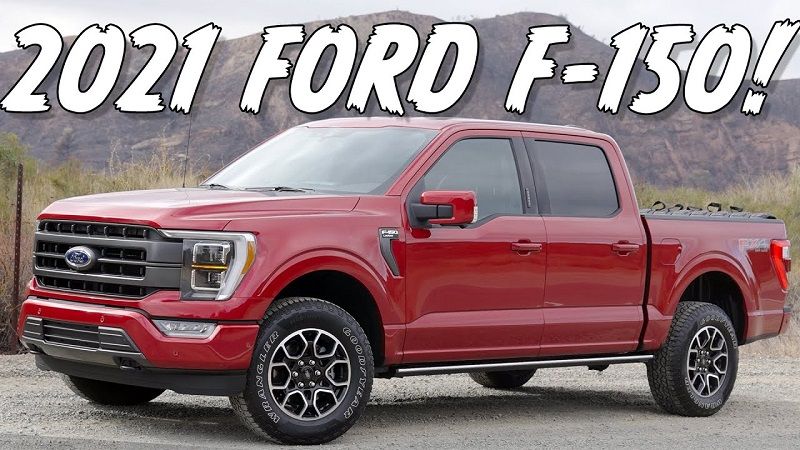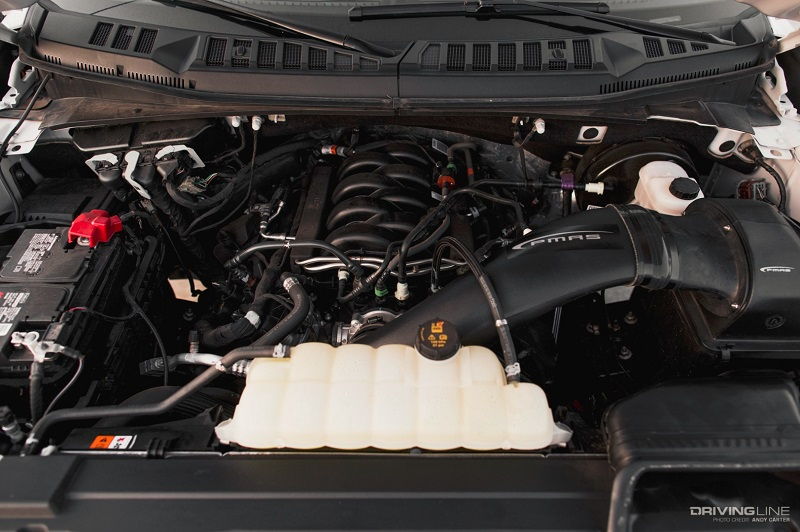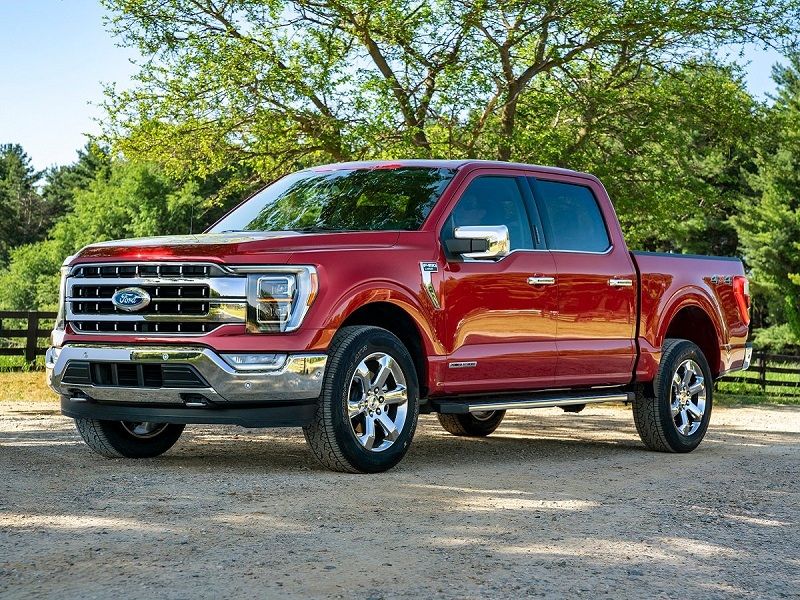Ford F150 5.0 Fordf150trucks.Com The Ford F150 5.0 comes with a powerful engine with 395 horsepower. Fuel economy is 19 mpg on the highway. It has a cam-torque-actuated (CTA) twin independent variable cam timing system and a timing chain tensioner assembly. However, it is not without its faults, and there are some complaints out there.
5.0-liter engine makes 395 horsepower
The 2018 Ford F150 5.0 is equipped with a 5.0-liter engine that makes 395 horsepower and 400 lb-ft of torque. This engine is similar to the one found in the Mustang and other Ford trucks. It uses a modular design and is capable of producing these kinds of power. This engine also runs on regular 87-octane gasoline.
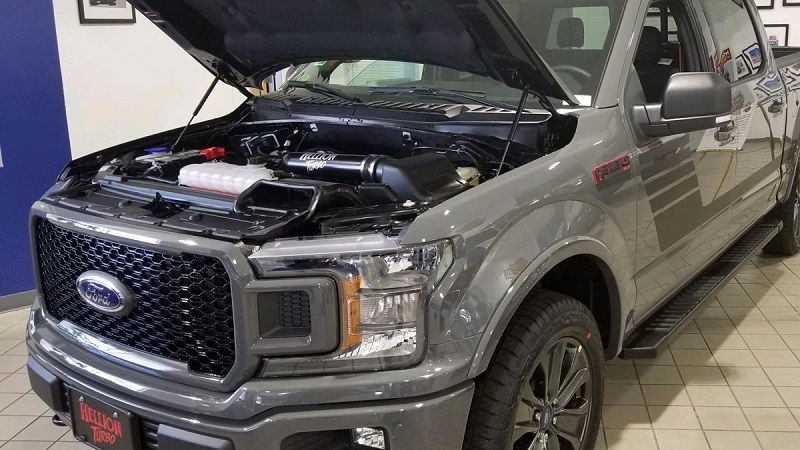
The 5.0-liter engine in the Ford F150 5.0 is one of the most powerful in the lineup. It features a 3.63-inch bore and a 3.65-inch stroke. This engine is paired with a 10-speed automatic transmission. It is standard in the Platinum and King Ranch trim levels, and can be ordered as an option on the XLT trim. Its horsepower and torque output are both impressive.
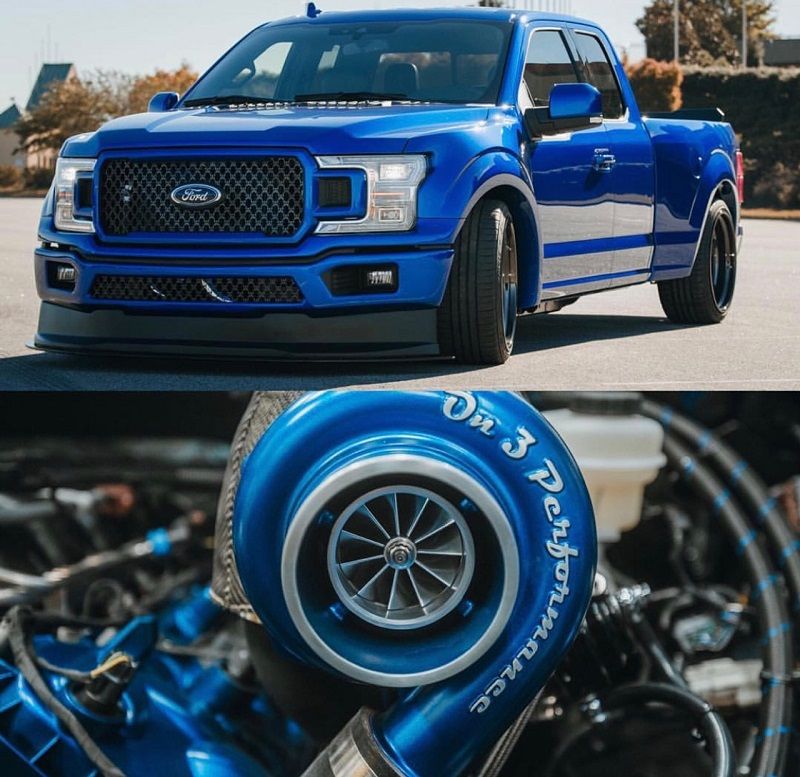
Ford F150 5.0
People also ask
Is the Ford F-150 5.0 a good engine?
How much horsepower does a Ford F-150 with a 5.0 have?
How many miles can a 5.0 V8 F-150 last?
Is the Ford 5.0 good?
Is the Ford F-150 5.0 engine problems?
Does Ford still make 5.0 F150?
Engine |
Maximum Towing Capacity* |
Maximum Payload Capacity* |
|---|---|---|
| 3.3L Ti-VCT V6 | 8,200 lbs | 1,985 lbs |
| 2.7L EcoBoost® Twin-Turbocharged V6 | 10,100 lbs | 2,480 lbs |
| 5.0L Ti-VCT V8 | 13,000 lbs | 3,325 lbs |
| 3.5L EcoBoost® Twin-Turbocharged V6 | 14,000 lbs | 3,250 lbs |
| 3.5L PowerBoost™ Full Hybrid V6 | 12,700 lbs | 2,120 lbs |
| High-Output 3.5L EcoBoost® Twin-Turbocharged V6 | 8,200 lbs | 1,400 lbs |
Ford F150 5.0 In addition to the 5.0-liter engine, the Ford F-150 also has a 3.0L EcoBoost twin-turbocharged V-6. This engine produces 395 horsepower and 400 lb-ft of torque. The EcoBoost engine in the Raptor and Limited trims makes more than enough power to tow heavy loads. Its high-output V6 also boasts a sportier character than its base counterpart. The EcoBoost engine also features a PFDI (proportional fuel-flow) system to improve efficiency and power.
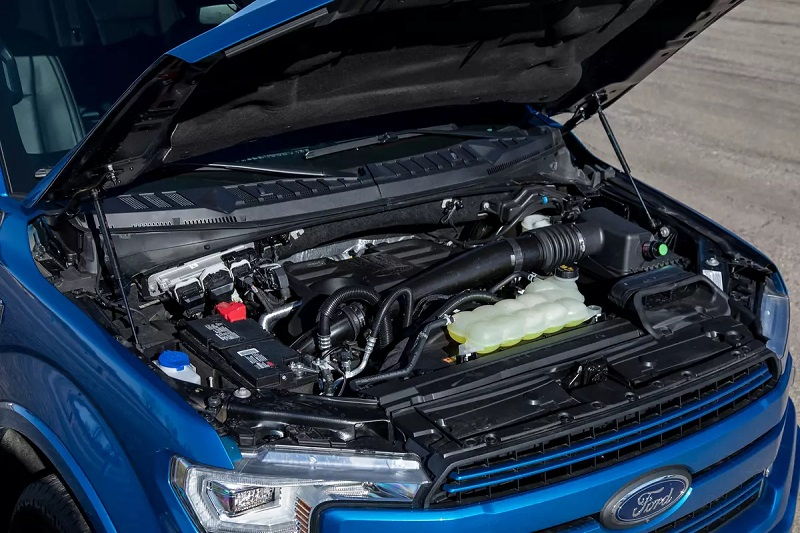
The Ford F-150 is also available with a 3.3-liter V6 engine that makes 290 horsepower. The base engine is equipped with a 10-speed automatic transmission and is enough power for city driving and light towing, but it lacks the muscle to perform in the most demanding situations.
Another drawback of the 5.0-liter engine is its tendency to stall during acceleration or idling. This can be a problem due to a variety of different issues. The engine may be running rough, or it could have excessive valve float. These issues require the replacement of new bearings, gaskets, and crankshaft repair.

#Ford F150 5.0 – Fuel economy is 19 mpg on the highway
Engine |
Horsepower |
Torque |
|---|---|---|
| 3.3L Ti-VCT V6 | 290 HP | 265 lb-ft |
| 2.7L EcoBoost® Twin-Turbocharged V6 | 325 HP | 400 lb-ft |
| 5.0L Ti-VCT V8 | 400 HP | 410 lb-ft |
| 3.5L EcoBoost® Twin-Turbocharged V6 | 400 HP | 500 lb-ft |
| 3.5L PowerBoost™ Full Hybrid V6 | 430 HP | 570 lb-ft |
| High-Output 3.5L EcoBoost® Twin-Turbocharged V6 | 450 HP | 510 lb-ft |
The Ford F150 5.0 has an impressive amount of brawn and can tow as much as 14,000 pounds with ease. Its 2.7-liter engine can provide good gas mileage, too. Alternative fuels such as diesel produce higher MPG ratings than conventional gas. Since diesel fuel is denser than gas, it burns more slowly and lasts longer. The 3.0-liter Power Stroke(r) V6 diesel engine offers up to twenty city and 27 highway MPG.
Efficiency
Looking to save both time and money at the gas station? Innovative engineering solutions help make the Ford F-150 engine lineup both powerful and fuel efficient. In fact, the available PowerBoost™ Full Hybrid engine option leads its class in terms of efficiency.

Engine |
City MPG** |
Highway MPG** |
|---|---|---|
| 3.3L Ti-VCT V6 | 20 MPG | 24 MPG |
| 2.7L EcoBoost® Twin-Turbocharged V6 | 20 MPG | 26 MPG |
| 5.0L Ti-VCT V8 | 17 MPG | 24 MPG |
| 3.5L EcoBoost® Twin-Turbocharged V6 | 18 MPG | 24 MPG |
| 3.5L PowerBoost™ Full Hybrid V6 | 25 MPG | 26 MPG |
| High-Output 3.5L EcoBoost® Twin-Turbocharged V6 | 14 MPG | 16 MPG |
The Ford F-150 has the most efficient gasoline pickup truck in its class. The Ford F150 5.0-liter Coyote V8 is the least efficient engine among the F-150 lineup. The base engine returns 17 city/24 highway/21 combined mpg. Those numbers drop to 12 city/17 highway/14 combined mpg when the truck is equipped with a four-wheel drive system. However, the 5.0-liter Coyote V8 offers slightly better fuel economy than the thirteenth-generation F-150.
The Ford F-150’s hybrid engine is one of the best options for fuel efficiency. It features standard auto start-stop technology, which promotes fuel-saving performance during stop-and-go driving. The hybrid engine has a capacity of 14,000 pounds of trailer weight. Its 10-speed automatic transmission is efficient and produces the right amount of power for every task.
Fuel economy is a concern in today’s economy. The hybrid engine’s 3.5-liter engine gets a combined twenty-one mpg, which is comparable to the fuel-efficient gasoline engines. The 5.7-liter V8 makes for an impressive 310 horsepower and 265 lb-ft of torque, but it doesn’t get as much mileage as the 3.5-liter V6 does.
The hybrid version of the Ford F150 5.0 is the most fuel-efficient pickup in its class, according to EPA estimates. The rear-wheel-drive F-150 PowerBoost, meanwhile, manages to reach an estimated 25 mpg. It can travel up to 750 miles on a single tank of gas.
#Ford F150 5.0 – Model Details & Specs
Ford F-150 PowerBoost™ Full Hybrid V6
If your number one objective is to experience outstanding efficiency, look no further than the 3.5L PowerBoost™ Full Hybrid V6. Without compromising on any of the durability, strength, or capabilities you’ve come to expect from the F-150 — this hybrid powertrain will save you time and money at the pump.
Joe Rizza Ford welcomes you to check out our massive inventory of both new and used Ford F-150 models. After you’ve found the one you’re most interested in, our team is standing by to help you discover the tremendous capability and performance characteristics of the F-150. Once you drive one, you’ll quickly understand how the Ford F-150 has held the title of America’s Best-Selling Truck for over 4 decades.
#It has a cam-torque-actuated (CTA) twin independent variable cam timing system
The 5.0-liter Ford F150 5.0 is equipped with a mighty engine. Its twin-independent cam timing system features cam-torque actuation to regulate the valve timing and increase power output. Its efficiency is further improved by the introduction of port-fuel and direct-injection technology.
The new engine design, first used in a V8 in the 2011 Ford F150, features a 5.0L dual overhead cam V8 engine with an aluminum block and forged steel crank. It produces 360 horsepower and 380 lb-ft of torque.
The system can also be found on the 3.0-liter Duratec V-6, the Australian Barra 182 and 240 Inline-6s, and the Ford Explorer and Mustang GT. Ford engineers call the twin independent VCTs phasers because they optimize combustion at full load and in low-speed ranges. It also helps improve fuel economy and reduce emissions.
The twin independent variable cam timing system in the Ford F150 5.0 engine is a revolutionary technology in the world of trucks. The system uses cam-torque-actuated (Ti-VCT) phasers and hydraulically controlled valves. Oil control solenoids are bolted into the cylinder heads near the camshaft phasers. The powertrain control module sends a signal to the phasers that changes the valve timing.
#Ford F150 5.0 – Technical Specs
2023 Ford F-150 Engine Options
The 2023 Ford F-150 has a total of seven engine options to choose from divided among eight trims. Some engines are available across many models, while a few are exclusive to a certain model. Here is a list of all the engines:
The Ford F150 5.0 is also the first to feature direct injection and a 10:1 compression ratio. It can operate on 87 octane fuel without detonation. Its downside, though, is that the EcoBoost engine is subject to valve issues. The fuel passes over the valves and acts as a cleaner, but the engine is prone to carbon buildup, which can affect performance and require major engine service.
The Cam-Torque-Actuated (CTA) Twin Independent Variable Cam Timing System (TIVCTS) in the Ford F150 5.0 engine uses Newton’s Third Law to keep the camshaft timing in tune with the engine’s load and RPM. This system also has a patented, double-switch cam lobe, which uses the forces of the valve springs to move the camshaft.
Ford F150 5.0-liter engine features two exhaust systems. The exhaust pipes, which come from the engine, are made of stainless steel and have primary and secondary tubes. The primary tubes flow into a common collector. The lengths of these tubes are tuned to minimize exhaust pulses and keep exhaust temperature low. Adam Christian, Ford’s header engineer, modeled the headers using CFD and had a local prototype shop fabricate them.
2023 Ford F-150 Towing Capacity
The 2023 Ford F-150 has impressive towing capabilities, with even the most compact engines offering hardy performance. If you’re looking for the maximum towing capacity, look no further than the 3.5L EcoBoost V6, which is able to tow up to 14,000 pounds. For the specifics of each engine’s towing capacity, see the table here:
| Engine | Towing Range |
|---|---|
| 2.7L EcoBoost V6 | 7,600- 10,100 lbs. |
| 3.5L EcoBoost V6 | 11,000- 14,000 lbs. |
| 3.5L PowerBoost full hybrid V6 | 11,000- 12,700 lbs. |
| 3.3L Ti-VCT V6 | 5,000- 8,200 lbs. |
| 5.0L Ti-VCT V8 | 8,200- 13,000 lbs. |
| High-output 3.5L EcoBoost V6 | 8,200 lbs. |
| High-output supercharged 5.2L V8 | N/A |
#Ford F150 5.0 – Is a 5.0L Ford F150 Worth It?
Efficiency
With the impressive technology offered by EcoBoost engines and a full hybrid option, the 2023 Ford F-150 has access to greater fuel efficiency. Now, with the right engine, you don’t have to sacrifice efficiency for power. For the specifics of each engine’s efficiency, see the table here:
| Engine | MPG (city/hwy) |
|---|---|
| 2.7L EcoBoost V6 | 20 / 26 |
| 3.5L EcoBoost V6 | 18 / 24 |
| 3.5L PowerBoost full hybrid V6 | 25 / 25 |
| 3.3L Ti-VCT V6 | 19 / 24 |
| 5.0L Ti-VCT V8 | 17 / 25 |
| High-output 3.5L EcoBoost V6 | 15 / 18 |
| High-output supercharged 5.2L V8 | 10 / 15 |
#It has a timing chain tensioner assembly
If your Ford F150 5.0 is having difficulty starting or running, it’s possible that your timing chain tensioner assembly is worn. You might notice that the check engine light comes on, your engine runs rough, or it stalls. It may also be experiencing timing chain slap, a sound that sounds like a chain hitting the lifter when you start your engine. Most people don’t worry about timing chain slap, though, because it usually goes away quickly.
The timing chain tensioner assembly has guides that help keep the timing chain anchored in place. If the guides are worn, the timing chain may skip and jump, and this puts additional stress on the timing chain tensioner and entire assembly. A failing timing chain tensioner can lead to severe engine damage, including bent pistons and valves. This type of damage could result in the need to replace the entire engine.
Owners of Ford F-150s have reported that the timing chain tensioner assembly has failed. This problem causes the engine to file out of time. According to Ford, the timing chain tensioner assembly must be replaced. However, this procedure can be expensive and requires removal of the accessory drive belt.
#Ford F150 5.0 – Engines, Specs, & Towing
Ford F150 5.0 The timing chain tensioner assembly is located under the cylinder block. It can be accessed through a small round access plug. Removing this cover will allow you to see the timing chain. You can then check the timing chain tensioner by inspecting the timing chain itself. It may have a slight slack or be too tight. You can also adjust the tensioner if necessary.
Timing chain tensioners require oil lubrication to prevent the timing chain from slipping. If the tensioner spring is not properly lubricated, it may bleed the oil and cause problems with the engine while driving. Ensure that you are using a proper oil level and type before replacing the timing chain tensioner assembly.
Timing chain problems are usually more common in vehicles with a high mileage. Fortunately Ford F150 5.0, there are a few symptoms to look out for that indicate your timing chain is failing. If you notice any of these symptoms, it’s probably time for a replacement.


